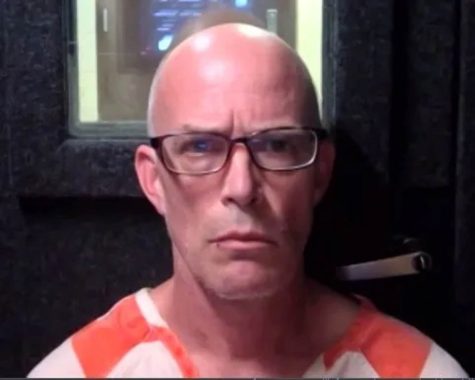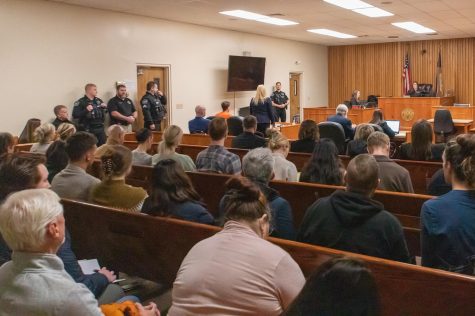Sexual assault: an underreported crime
November 15, 2013
As much outreach as there is, sexual assault is still one of the most underreported crimes in college towns, said Dean of Students Melynda Huskey.
“We’re not even getting reports to Standards and Accountability that reflect anything like the genuine of incidents of intimate partner violence, sexual assault, stalking, on our campus,” Huskey said.
Many theories about why underreporting exists come down to gender stereotypes and victim blaming, said Tamara Jell, Alternatives to Violence of the Palouse (ATVP) coordinator of sexual assault services in Whitman County.
“There’s just an awful lot of social stigmas that go along with that,” Pullman Police Cmdr. Chris Tennant said. “And the fear of the unknown is even worse than not saying anything.”
Jell said she believes the problem lies with gender roles and a deep cultural problem putting the responsibility for a man’s behavior on women.
She said this idea is taught to people from the time they are children. Simple things all girls grew up doing, like walking with a buddy everywhere and carrying keys in hand when walking to the car are all done so girls do not get raped, she said.
“If you’re a woman and you’re walking around, the responsibility is on you to make sure you don’t get raped,” Jell said.
The idea of blaming the victim for the sexual assault is a prevalent one in our culture, Jell said. The common questions asked right after hearing about a sexual assault are ‘Why did she dress like that?’ and ‘Why did she drink so much?” or ‘Why did she go in that room with him?’ All seek to discover what the victim did wrong, Jell added.
These types of questions are very damaging, ATVP Executive Director Christine Wall said, and are part of the reason people are reluctant to report when a crime like this happens to them.
“There’s a lot of shame around sexual assault because of the victim blaming that we uphold in society,” Wall said. “So many victims blame themselves and hold themselves responsible, and oftentimes don’t feel like they deserve support or understanding.”
Since most perpetrators and victims of sexual assault know each other, the victim may be afraid of retaliation from the perpetrator, WSU Violence Prevention Coordinator Nikki Finnestead said. It could also be daunting if they share a friend group because of the fear that friends may choose sides.
Some people do not report sexual assault because they think their suffering is less considerable than the suffering a perpetrator would go through, Huskey said.
“It’s just easier to write off your own pain, your own victimization than it is to really enforce accountability on someone else,” Huskey said.
The long process of prosecution might also be a deterrent for students who do not report.
“There are a lot of different steps in coming forward, and for some people, for lots of different reasons, that is very daunting,” Finnestead said.
Societal norms around masculinity often stop men from reporting when sexual assaults happen to them as well. The norm is that men always want sex, or they are not a real ‘man,’ Jell said. Or, if they are raped by a man, that they should have been able to fight it off, Jell said.
“We do know it happens, and probably with more frequency than people think,” she said.
More men are calling the ATVP hotline now than ever before, she said.
However, the numbers of sexual assaults reported to the police are still low. Last year, 61 people used the ATVP hotline for sexual assault cases, but only 16 reported the crime to the Pullman Police Department, and 17 to the WSU Police Department. Sixteen of the 17 cases reported are classified as ‘sex offenses,’ which can include sexual misconduct as well as things like public exposure.
CHANGING THE CULTURE
These statistics and issues surrounding sexual assault are not atypical of college campuses – it is a problem that impacts most college cultures.
Huskey said calling the culture a rape culture is reasonable.
“We are accustomed to excusing or normalizing behaviors that are a violation of the law,” Huskey said.
However, efforts are being made to change the culture on campus. After a letter called “The Dear Colleague Letter,’ which informed universities efforts to combat the issue were not sufficient, was sent out to all administrators at all universities nationwide training at WSU intensified, Huskey said.
ATVP, the Women’s Resource Center, Health and Wellness Services, Huskey, Finnestead, and other organizations on campus are all working together to combat the culture in a team called the Coordinated Community Response Team, and groups on campus are working to promote bystander intervention.
In addition, last year a federal grant created Finnestead’s office to prevent gender-based violence, including sexual assault. One way she has fulfilled this purpose is through the Green Dot program, which encourages bystander intervention.
“As bystanders to these types of violence, we are generally not always going to see a sexual assault in progress if it’s happening behind closed doors,” Finnestead said. “But what we can recognize as bystanders are the red flags that precede a situation like a sexual assault.”
The Green Dot program offers training in order to show what those signs, called Red Dots, look like and to encourage bystander intervention, called Green Dots, she said.
A Green Dot can be as simple as walking a friend home from class if she is afraid she is being stalked by an ex-boyfriend, Finnestead said.
Bystander intervention is key, Hansen said. He said it is important to recognize that sexual assault is a community issue, not a women’s issue or a victim issue.
“There are people out there who see things and they need to step up and say something in order to stop this,” Hansen said.
Training students in bystander intervention is a step to reach out to a core group that may impact the community around them, Finnestead said. Peer influence is tremendously effective, she said.
“We want students to feel empowered to create change on campus,” she said


















